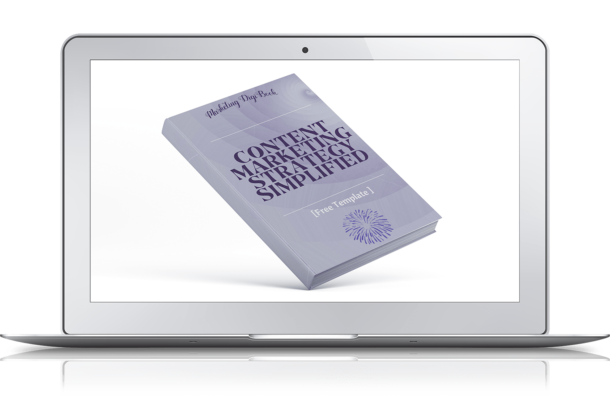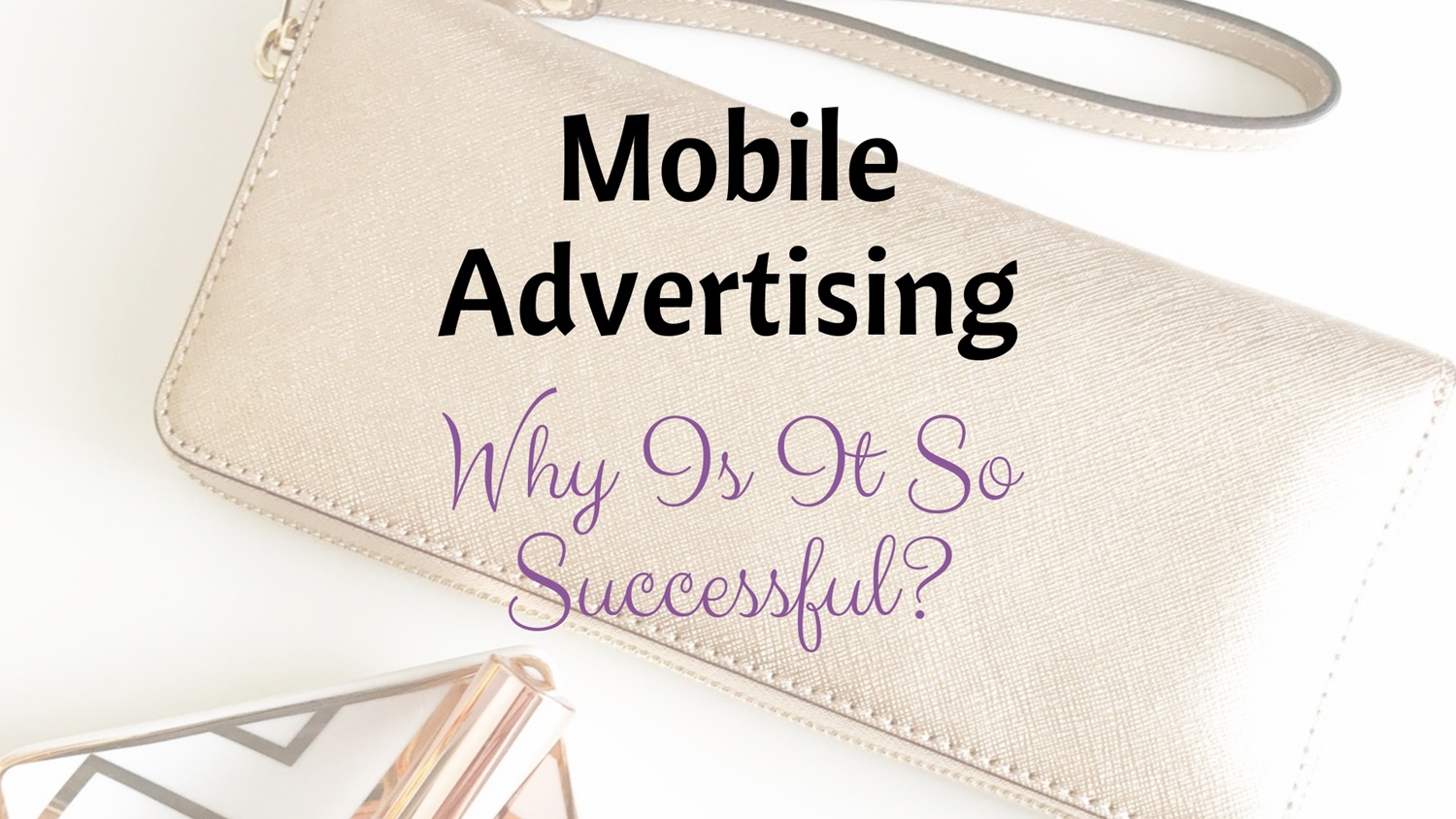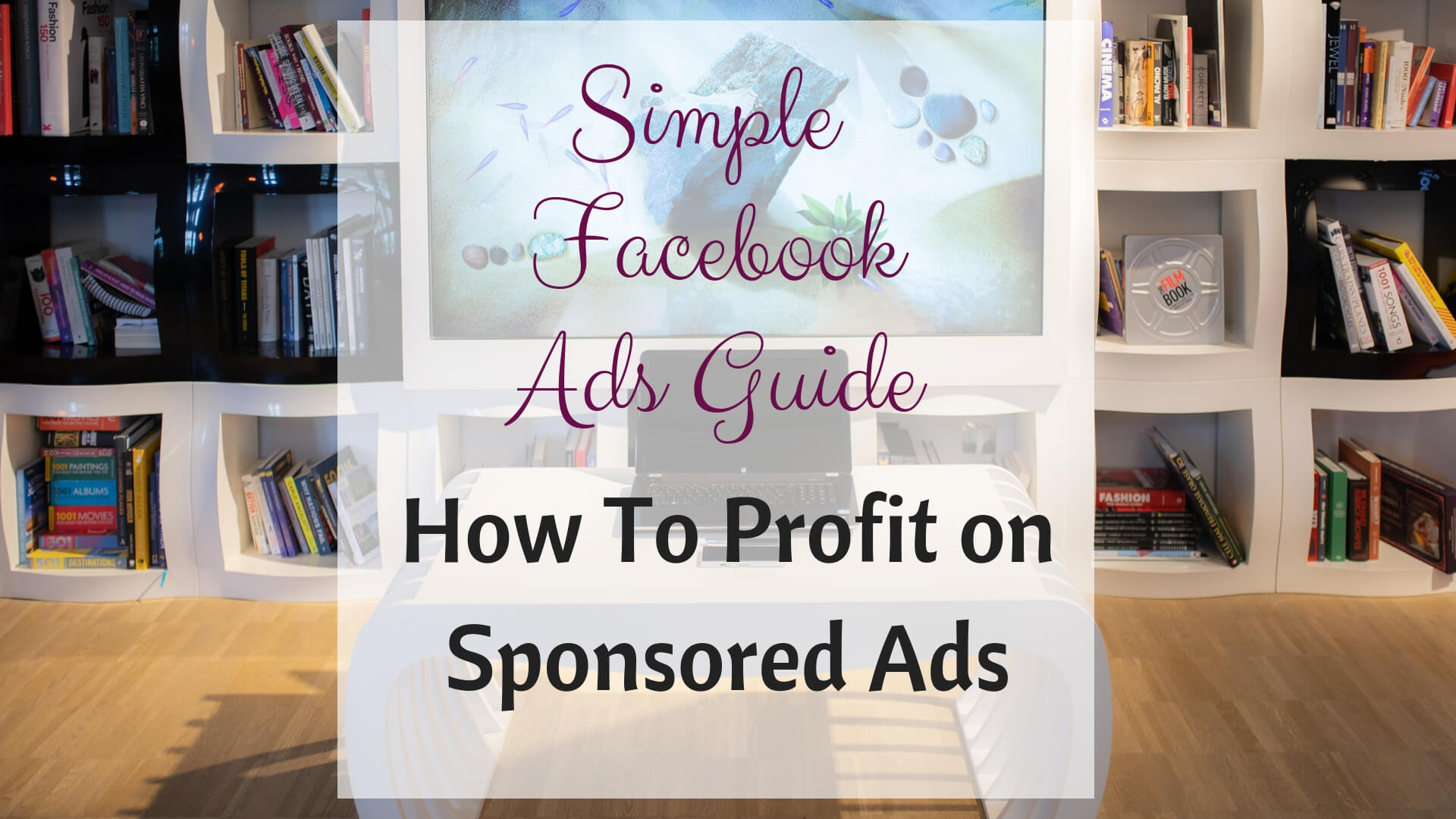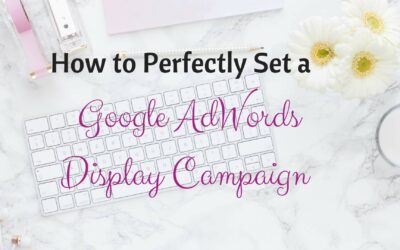If there is an industry that has radically been affected by the growing spheres of influence of Google and Facebook, it’s the advertising industry. They control a duopoly of about 61% of US digital ad spending. The digital age has dramatically reshaped the advertising model from the traditional 30-second television spot to having to maintain a myriad of platforms and devices. Native ads are one of the venues to test.
This market fragmentation means audiences are grouped into different segments with varying preferences and needs. It’s for this reason that advertisers had to drop the “one size fits all” approach and embrace more personalized and authentic ways such as native content advertising.
The thing that makes native ads seem more authentic is how they incorporate subtle advertising that naturally blends into another source of content or material.
So, What Is Native Advertising?
In simple terms, native advertising is content that’s been paid for but disguised as typical and organic content for a specific platform. Visually, it matches the website design and covers topics that resonate with the website’s audience. If used through the right channels, it can capture the minds and hearts of your potential audience in an excellent way and can take your brand’s visibility to the next level.
Let’s Make Your SEO & Content Work Better for Your Business
Are Sponsored Posts Different from Native Ads?
Sponsored content or sponsored ads are a type of native advertising. It’s content that’s created by the publisher on behalf of the brand. For the purpose of differentiating the two, native ads are a media placement offered by the publisher; they fit the form and function of the surrounding editorial and are filled with the type of content the brand wants to promote.
Sponsored content is not created or published by the brand, nor does it appear on the brand’s pages. It can look and read like a news story that can mention a product or service and includes a call to action. Native ads on the other hand can be created and published by the brand and appear on its pages. It also can look and read like a news story BUT doesn’t promote a product and neither does it have a call to action.
However subtle it is, the difference is evidently clear.
Native Advertising Vs. Content Marketing. Are They the Same Thing?
No, these two are not one and the same thing; content marketing is a larger idea than native advertising because it has a wider and longer focused goal.
Like native advertising, content marketing offers valuable knowledge to create brand awareness while targeting a specific group of prospective customers.
The difference, however, is that content marketing takes it further in that its main focus is to sustain the lead as part of a long-term process with a target of more conversions. It doesn’t just do a single piece of content; rather it integrates into an overall marketing campaign.
Native advertising is a form of content marketing.
Another difference is that the media used to share this marketing content, is owned by the brand itself (like they own their own publishing house, etc.) while native ads use media that they do not own, so they pay to play.
This long campaign often involves the use of content assets such as newsletters, blogs, videos, and guides.
What Are the Types of Native Advertising?
As brands are hunting for the least intrusive ways to reach their target audience, publishers are seeking new ways to monetize their content, native content comes to complete the game and provide effects so seamlessly.
So, there are 6 types of native advertising according to Interactive Advertising Bureau.
1. In-Feed Units
Here sponsored content is promoted within a publication’s native environment and it’s marked as sponsored. Its format is identical to the format of the publication. This content may be written by either the publisher or by the corporation of the sponsoring brand.
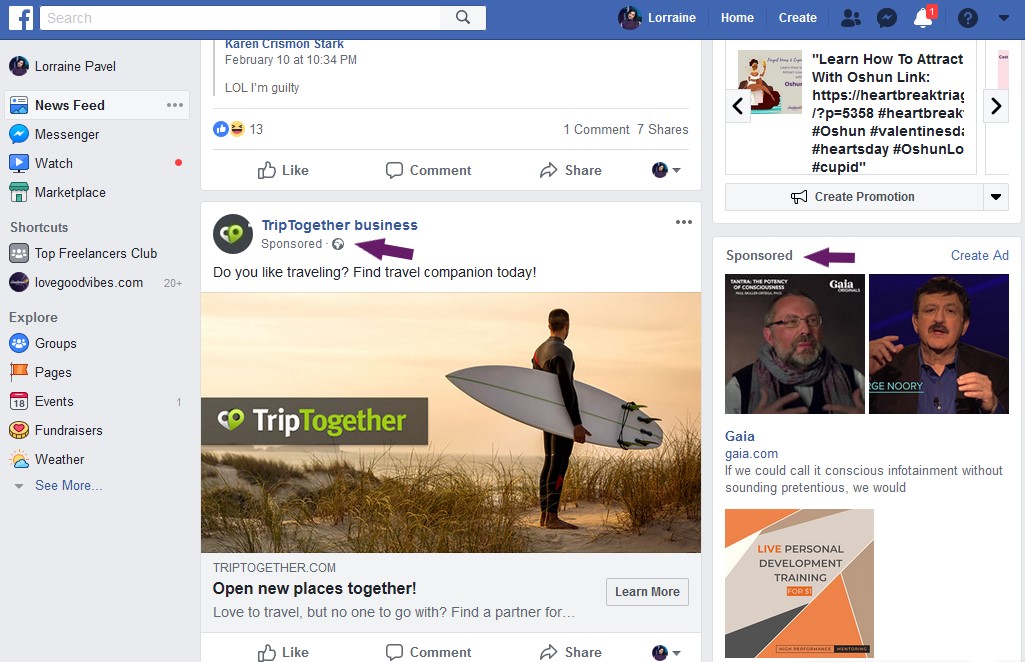
Source: Facebook
2. Promoted Listings
These are just listings without editorial content and are created to fit harmoniously with the browsed content. They’re characteristically used by e-commerce sites to feature sponsored products and resemble already existing products on a particular site.
3. Paid Search Ads
Have you ever noticed ads on top of your search results page? Those are paid search ads. They’re similar to promoted listings, the only difference is that they specifically appear at the top of the search results page. They are also localized; this means they promote businesses around the user’s area depending on their preferences. They are considered native as they are made to appear as organic search results.
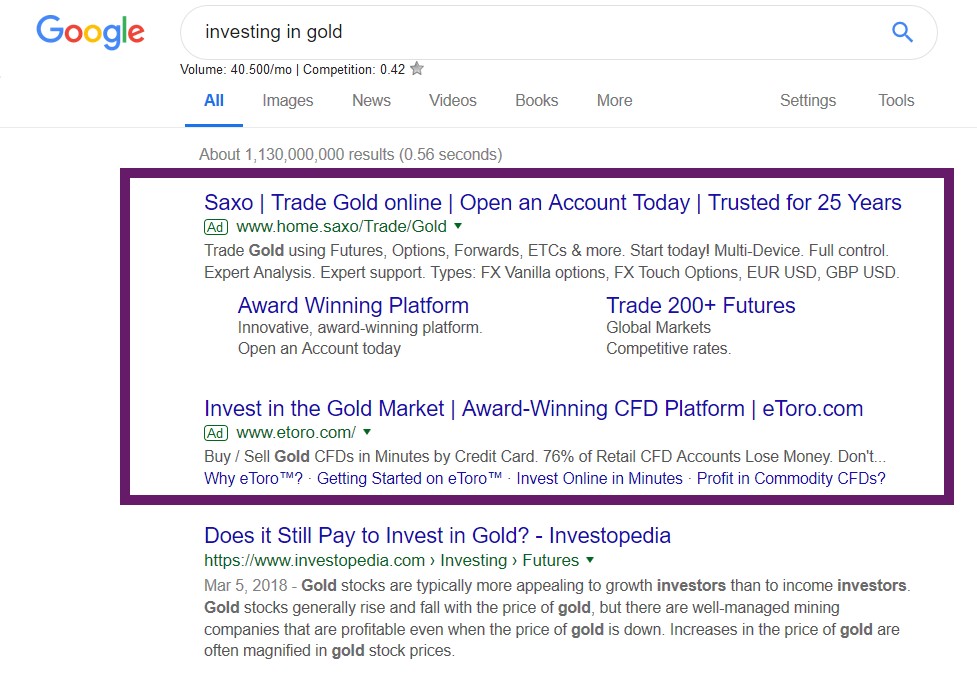
4. Recommendation Widgets
You most likely have come across a widget like “You may also like” or “Recommended for you” at the end of most articles you’ve read on most websites. Those are content recommendation widgets. They are paid content discovery links distributed by content amplification networks meant to amplify a brand’s content by recommending it to sites with a similar audience.
5. Custom Ads
These are personalized ads created to fit perfectly into the media hosting them.
6. Ads Created with Specific Native Elements in Mind
These ads don’t look any different from other ads; the difference is that their context is very relevant to the publisher’s site as well as the content they appear next to. They may easily look like one flowing story.
Native Advertising Examples
There are so many amazing examples of native advertising. Here are just two of the best.
The Mercedes Benz E-Class series in the Washington Post
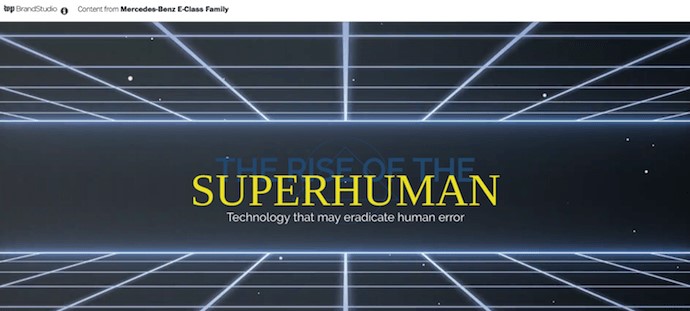
This is a great example of simple and clean content designed to arrest the user’s interest. The campaign dubbed “The rise of the super-human” is centered on various technologies that can turn people into super-humans by reducing human error and allowing you to achieve your potential through the use of the robotic exoskeleton suits, and the fact that this Mercedes Benz E-Class series integrates this intelligent driving system.
The Landrover
This nail-biting movie-like native ad campaign by Landrover that was shared in their networks is the perfect example of how to sell your product, without looking like you’re trying to.
Why Do Native Ads Work So Well?
There are loads and loads of content being generated daily, and all this content is always accompanied by ads in such an intrusive manner, that many consumers come up with ways of ignoring ads, while others seek help from ad-blocking software to get rid of these ads from all sites altogether.
But since native advertising is not meant to look like a common ad, it’s often consumed and pretty hard to ignore. Native ads Statistics show that consumers engage with native ads more than traditional banner ads and have the potential to boost conversions by up to 18% more than display ads.
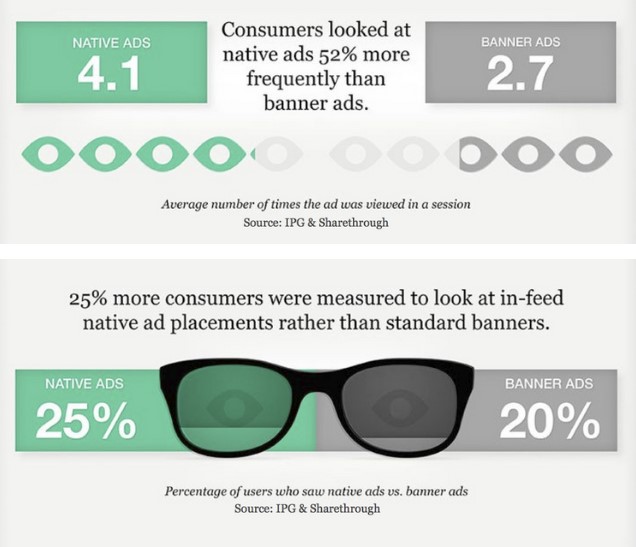
Brands and advertisers also love native ads because of the main fact that the click-through rates tend to be much higher compared to typical ads. 70% of people prefer learning about products through well-written content than through traditional advertising.
With this in mind:
Here Are 3 Main Reasons Why Using Native Advertising Gives You an Up Leveled Advantage
a. It Captures More Attention
The main purpose of any advertisement is to access and capture the attention of your target audience. In marketing, performance metrics are essential and native advertising when used right generally offers higher viewership rates, greater conversions, and more engagement compared to traditional advertisements.
b. Native Advertising Builds Up Brand Relevance
As a brand, the more you engage with your audience using their own tools and language, the more you’ll be able to resonate with them and build a relationship. With the countless ads that consumers are bombarded with on a daily basis, the possibility of building a relationship with your target market encourages trust and loyalty.
This is an indispensable part of building a network of devoted, repeated buyers as well as encouraging the arrival of new fans into your tribe.
Using native advertising to associate your brand content with the target taste and the publisher in question, you boost your level of shareability which gives you an opportunity to go viral.
c. Native Advertising Empowers Your Target Audience
Most consumers don’t just shop for new products or services when they get online, what they look for are solutions to problems they have. As such, they value useful content from companies that seem to provide solutions or assistance to them, rather than content that out rightly seeks to make profits.
Native advertising offers content in a subtle and convincing way that presents useable and empowering information to customers, by convincing them that they’re valuable. This effort is always rewarded with their loyalty.
How Does Native Advertising Boost Visibility?
Research shows that readers spend almost the same amount of time reading native ads as they do editorial content; it also indicates that 53% of them pay more attention to this kind of advertising compared to other forms such as banner advertising.
Native ads are simply the solution to banner blindness. They are often received well by the target audience because they always seem less intrusive compared to say popups or other ad types that are easily ignored as people see them as noise in their everyday environment. Native ads offer a different feel to the audience and entice her to consume the content. So, how then can you get the best visibility using native ads?
How to Get the Best Visibility from Native Ads
1. Identify the right channels
Create a list of channels where you’d like your native ads to appear, have in mind that not all channels will offer the option for native advertising and some may not be fitting because they may not appeal to your target audience.
When you think about the visibility of native ads, think of related industry websites, digital magazines, and social networks where your ads might blend in naturally. Your aim should be to pick a platform that will seem organic for your brand and the target audience you want to serve.
2. Position yourself as an authority
Once you’ve identified channels that will be relevant to your ads, research how ads are placed on these platforms and make sure that yours will look exactly like the native sites. While you’ll need to write about topics that are relevant to the reader, quality should your top priority.
Consider how you can create content that’s a step above what the readers are used to seeing. Think of things like thought leadership, unexplored news items, and such approaches. This will build your authority and attract many potential viewers.
3. Make the most of A/B testing
A/B testing can help you judge how certain elements of your ad can perform in the right circumstances. Whether you’re looking to try native advertising or are getting paid to create content for it, elements such as headlines can hold so much for your success. So, it’s critical to test and optimizes frequently.
How to Create Effective Native Advertisements
Before proceeding with these steps, it’s critical that you have a look around at what’s trending and what’s going viral across the web. This will give you a hint on concepts that are already working having been tried and tested by others.
When properly executed, native advertising will improve your
- Customer engagement
- Brand’s reputation
- Content exposure
- Brand reach and awareness
- Traffic to website
- Email List
Step 1. Set Your Goals
It’s important to have a plan and a goal for what you want to achieve. Understand the demographic formation of your audience in terms of brand size and industry etc. Is it digital? What platforms will best fit your advertisement? Is there any other method of distribution in the native ad package? All this information will help you draw a plan that’s practical.

Visuals are the first vector of sales.
Use Professional Styled Stock Photography to Promote Your Business.
Step 2. Create Content That Will Sell
Having a clear image of what you want to achieve and with the best strategy identified, content creation becomes the next most important thing. It must include a mission statement that’s in tandem with your goal.
To be able to create content that’s relevant to your audience, you must understand their preferred platforms and content of choice.
As you tailor your copy to your publisher’s culture and design, consider who will write the content. If your team writes it then it means they’ll have more control over what to say and the brand voice will be stronger. However, if the publisher’s editorial team will be writing it, just know that your content will most likely be tailored to lean on their brand voice.
That said though, you can provide your publishers with a topic of your choice. This will help get your message to your audience, but with a voice, they’re familiar with.
And just for good measure, you may want to find out if your publisher allows a link back to your website because you’ll need this for lead generation.
During content creation consider visual content as well, over 80% of marketers are leveraging visual elements and components in the content they’re publishing, with video alone having over 60%. This means video content is quite important if you want your campaign to thrive in engagement. They can go together with the written content to give a powerful and irresistible campaign.
Lastly, remember native advertising is simple marketing. It’s all about capturing the audience’s attention by telling them something interesting and helpful to them. So, by all means, keep it simple and clear.
Step 3. Optimize
Well, it goes without saying; the key to perfecting any marketing channel including native advertising is optimization in both top and middle of the funnel.
It’s important to know the average conversion rates of all your campaigns, this way you can break them down to campaign type and performance. This will aid your optimization process. Here is how you can identify what requires to be changed if the campaign is not performing as expected.
- The number of distinct views/ total impressions= strength of the headline.
- Number of clicks/ distinct views=strength of the content/ article
- The number of leads/clicks = strength of the landing page.
For the strength of the headline and the article, you can work with your publisher to make changes where necessary if the results are not pleasant. If the issue lies in the landing page, then work on it and see why you’re not getting conversions.
It’s however, important to remind you that these metrics can only compare against your own brand data, not the whole industry.
So, because the real goal of your native ads campaign is lead generation, the best metric to show success is the sales opportunities that arise from these leads. Great leads mean more sales opportunities. Publishers here can help since they have the visibility to see the quality of traffic that’s being driven to the article. This leads to the next point.
Step 4. Build a Good Relationship with your Publisher
Even after all the work has been done, if you don’t have a good relationship with your publishers, then all that effort may not amount to much. Having open communication with the editor ensures that your content is aligned with your goals and the message you want to pass.
A good relationship ensures a flexible working environment where any challenge can easily be resolved.
Step 5. Evaluate and Compare
Whether it is conversions, page views, impressions, or time on the page, the results of the goals you set out in step one above are what you should be getting now. So, track your metrics, take a look and see how they have performed.
Take Home
Native advertising is effective if done correctly. Your ad must add value to the audience and must be placed alongside relevant content for it to be native. More and more customers are choosing products offered through content compared to traditional ads.
So, to learn properly how to incorporate effective native ads into various publishers’ cultures, designs and audiences, you should look at it both as an art and science and you will need to master it.

